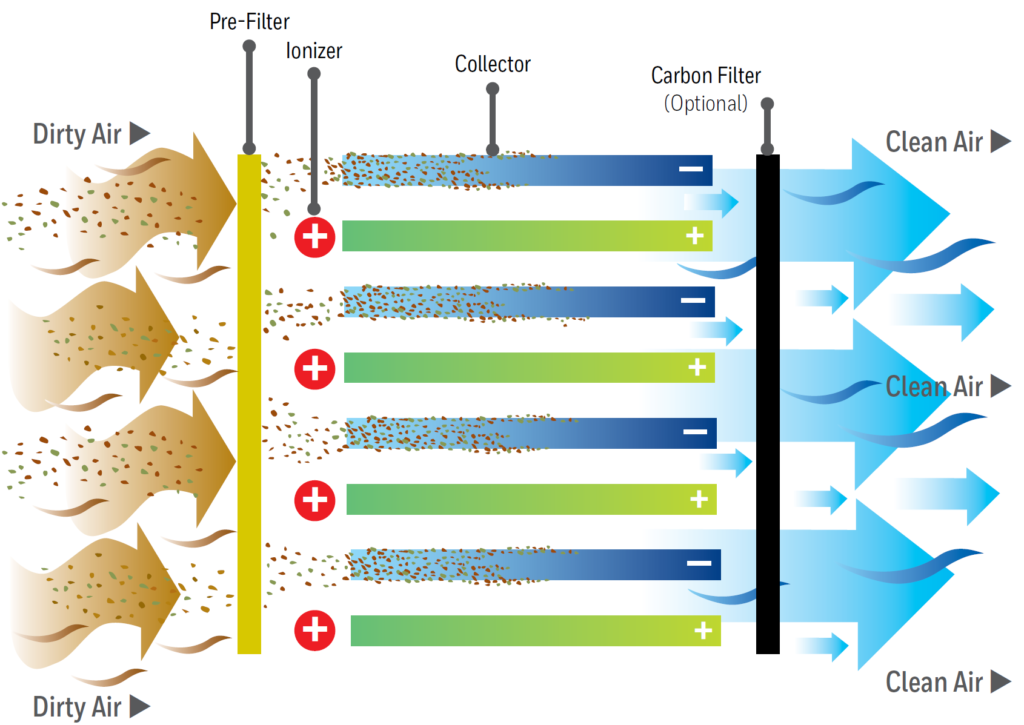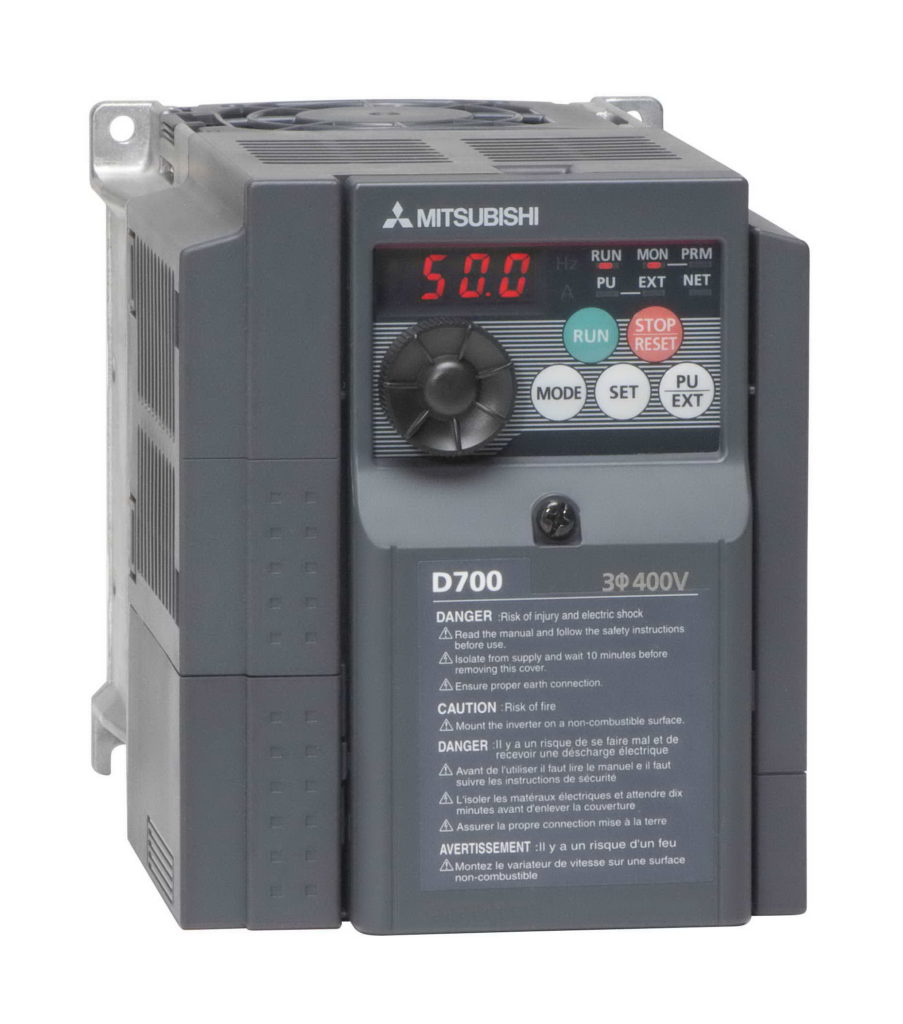About Electronic Air Filtration
Principle of Electronic Air Filtration

Electronic Air Cleaners (EACs) utilize the principle of ‘electrostatic
precipitation’. Air is drawn by the AHU fan blower through a fine washable
aluminium mesh pre-filter which traps the larger dust particles and
contaminants. The remaining particles which include fine dust, smoke
particles, pollens, mould spores and bacteria, some as small as 0.01
micron, pass into a strong electrical field (ionising section) where the
particulate receives an electrical charge. The electrical charge is
imparted on the microscopic particulates by the strong electrical field
created by ionizing wires charged to high voltages of the order of 8,000
volts DC.
The charged dust particles then enter a region filled with closely spaced
parallel aluminium plates alternatively charged with positive and negative
voltages of the order of 4,000 volts DC. Positive plates repel the
positively-charged particles which are attracted by and retained on the
negatively-charged plates by electrostatic forces, further supplemented by
intermolecular forces, causing the particles to agglomerate. Similarly,
the negatively-charged particles are attracted to the positively-charged
plates.

The net effect is that a lot of very small microscopic particles like
smoke and bacteria are efficiently removed without the ‘restraining
effect’ of mechanical media filters. Without the high pressure drops
experienced in mechanical media filters, the AHU fans can run at a much
lower speed while delivering the same amount of air. With a high removal
of small sub-micron sized particles, the cooling coils stay cleaner,
resulting in better heat transfer and energy savings.